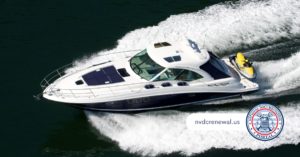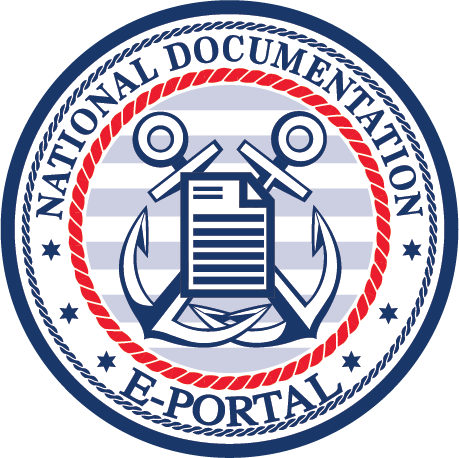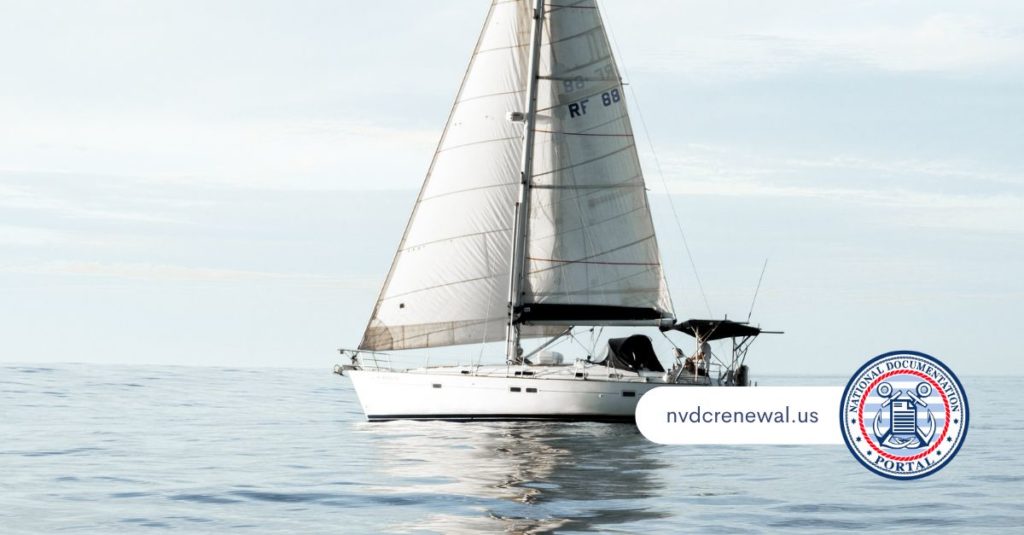If you’re planning on selling a Coast Guard documented boat, there are certain rules and procedures that you’ll need to follow. Documented vessels fall under the jurisdiction of the United States Coast Guard and are governed by federal maritime law.
That means it requires the proper documentation, submitted correctly and in a timely manner.
At the National Documentation Portal, we provide an easier, more efficient way to complete this process. Our secure online platform includes every USCG form you’ll need, including the required Transfer/Exchange application. We can guide you step by step through how to complete it correctly.

Why a Bill of Sale Alone Isn’t Enough for Documented Vessels
A bill of sale may be enough when selling a state-registered vessel, but it isn’t sufficient when the vessel is federally documented. That’s because Coast Guard documented vessels are part of a national registry maintained by the National Vessel Documentation Center (NVDC).
When the ownership of such a vessel changes, the USCG requires an official record of the transaction through a Transfer/Exchange of Certificate of Documentation.
The bill of sale can still be part of the transaction—it may be used as supporting evidence—but it is not what officially changes ownership in the Coast Guard’s records. Without submitting the correct form, the USCG will still list the seller as the vessel’s owner, which can create problems down the line for both parties.
Through our site, we make sure you don’t overlook this important step. We not only provide the Transfer/Exchange form itself, but we also give you the instructions and checks that help you complete it accurately. Our goal is to make this process more manageable.
How the Transfer/Exchange Form Works
When selling a documented vessel, the Transfer/Exchange of Certificate of Documentation form is required to update the ownership information in the official Coast Guard record. This form must be filled out with accurate, complete details about the vessel and the parties involved in the sale.
Here’s the kind of information you’ll need to provide:
- The vessel’s official number and name
- The current owner’s name and the new owner’s name
- The method of transfer (sale, inheritance, etc.)
- Proof of U.S. citizenship for the new owner (only U.S. citizens may own documented vessels)
Submitting this information by mail or navigating government websites on your own can take time and introduce delays. But, that doesn’t happen when you go through our portal. Here, we can help ensure that the form is properly completed before submission, reducing rejections or costly mistakes.
Why Accuracy Matters When Transferring a Documented Vessel
When selling a documented vessel, accuracy is essential. Any mistakes or omissions on the Transfer/Exchange form can cause the Coast Guard to reject the submission. That, in turn, can delay the sale and create complications with legal ownership, financing, or insurance.
For example, if the vessel was previously used for commercial purposes and the buyer intends to use it recreationally, the documentation must be updated to reflect this change. Failing to do so could result in noncompliance with federal regulations. Similarly, mismatched names, missing signatures, or incorrect vessel numbers can trigger a request for resubmission.
With our help, you can avoid these issues. The National Documentation Portal checks your submission for accuracy and completeness before sending it to the USCG. We also allow you to save your progress and return to it later if you need time to collect documents or verify details.
What Happens After the Transfer Is Submitted
Once the completed Transfer/Exchange form is submitted through our portal, we transmit the application to the USCG on your behalf. If everything is in order, the Coast Guard will process the transfer and issue an updated Certificate of Documentation listing the new owner.
The new certificate serves as proof of ownership and enables them to operate the vessel legally under the federal registry. Ensures liens are documented and new ownership is officially recognized in public records.
Other Forms Related to Selling a Documented Vessel
Depending on your situation, there may be other forms required during the sale. If the vessel has an outstanding mortgage or lien, a Satisfaction of Mortgage form may need to be submitted before the transfer can proceed. We also provide this form through our portal.
If the new owner wants to change the vessel’s name or hailing port during the ownership transfer, those updates can be included as part of the process. Our system supports those additional changes so that you don’t have to submit separate paperwork for each adjustment.
And if you’re unsure of the vessel’s lien status, you can request an Abstract of Title through our site before completing the sale. This document provides a detailed history of ownership, encumbrances, and documentation status—critical information for both buyers and sellers.
What We Offer When You’re Selling a Coast Guard Documented Boat
If you’re selling a Coast Guard documented boat, the process goes far beyond a handshake or handwritten contract. The U.S. Coast Guard requires formal documentation through a Transfer/Exchange form to ensure that ownership records are properly updated. At the National Documentation Portal, we make that process easier and faster.
We don’t just offer the required forms—we offer a simplified, secure way to complete and submit them. From step-by-step instructions and digital form submission to additional tools like Abstracts of Title and lien documentation, we help make the sale of a documented vessel smoother for both parties. With our help, you can complete the transfer properly and keep your vessel’s history—and your peace of mind—intact.

